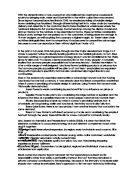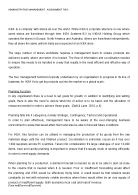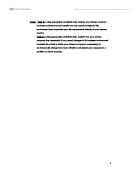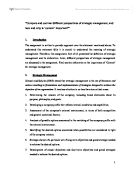Ikea's power culture has certainly been one of the leading asset in driving forward the company, inspiring all staff to work towards achieving its goals and objectives. Kamprad, Ikea's creator, though officially retired since 1999, is still the cheerleader for the practices that define Ikea's culture. Holding an extraordinarily flat organisational structure for such a large company (there are only four layers between a warehouse employee and the CEO), the simplistic approach in managing the organisation with the same values inculcated in its products offering is instrumental to Ikea’s success. Cost-saving, simplicity and humbleness are basically the main constituents of the organisation's management's style and goods.
As reported in Ikea's 2009-2010 summary, the group opened 12 new stores in 2010 in 7 countries which as of 31st August 2010, accounted for a total of 280 stores in 26 countries (Ikea FY10 Summary). As the expansion strategy remains, Ikea has a long way to go before hitting global internationalisation. Indeed, future plans include opening stores in Serbia and Croatia, South Korea and India. Exhibit 1 shows in yellow all the countries Ikea has not as yet penetrated, and we can see a large amount of potential targets in Central Europe and South America in addition to further expansion in the United States of America which only accounts for 48 stores, a small number considering the size of the market.
In fact, it is interesting to note that Ikea has hardly had considerable strategic changes in many years. Because Ikea has been following an organic growth for some decades now, the recent change of Ikea's strategic move from pure expansion to stability is purely environmentally motivated. Indeed with the global recession of the past couple of years, the organisation reached a point of consolidation. As Ikea's clients might have been hit by the global economical downturn, SØren Hansen, Ikea's Vice President & Chief Financial Officer, announced that the sales increased to 23.1 billion EURO in FY10, an increase of 7.7% compared to the previous year. But despite the international recession coupled with a change in management as Michael Ohlsson was announced to become CEO and President in April 2009, the new strategy move which is to build on growth with a strong focus on taking care of and improving current holdings, was unprecedented for the furniture giant. As part of this new strategy, a programme to rebuild the existing stores was launched, quality issues addressed and a strong Cost Performance Program started (Ikea FY10 Summary). This latest program goes hand-in-hand with the price-cutting practise that has been going on for a number of years in the organisation. Indeed reducing costs means that the prices can be sensibly reduced leading to a sales increase as dictated by the demand culture. Ikea has cut prices 2 percent to 3 percent each year in the past decade, but Ohlsson is after higher-profile reductions: A sofa that cost $699 a year ago now goes for $499, a queen bed frame that went for $299 a year ago is now $199, and a coffee table that was $20 in the 1990s now sells for $7.99 (D'Innocenzio, 2010). These approaches strengthen Ikea's integrated position in consideration with Porter's Generic Strategies. Furthermore, it is important to consider the GNP elasticity, which based on the cost-leadership approach formulated at Ikea, contributes to an expected increase in demand as the economy goes down in the recession period.
The decision to promote Ohlsson as CEO and President after 30 years of service within IKEA will enable the organisation to retain the fundamental culture inspired by Kamprad as it is fundamentally ingrained in its corporate DNA, namely a social responsibility to provide affordable, functional and beautiful products to everyone.
Ikea is also strongly focusing on its Corporate Social Responsibilities, with a strong emphasis on sustainability in addition to serving the world with affordable furniture which is, as we have seen earlier, the epicentre of its mission statement. One way Ikea believes it can achieve greater sustainability is through a code of conduct it has launched in 2000 for its suppliers, which basically dictates the minimum requirements for environment and social & working conditions when purchasing products, materials and services its suppliers should have. It covers working conditions, the prevention of child labour, the environment, responsible forestry management and more. In addition, Ikea highlights its own initiatives via its “Never Ending List” launched in 2009, which simply lists the sustainability implications deriving either from its business model (for instance flat packs which optimise loads resulting in fewer transports, which reduces emissions) or Ikea led initiatives such as phasing out incandescent bulbs in favour of more environmentally friendly alternatives. Ikea also partners with internationally recognised organisation WWF, Save the Children and UNICEF.
It can however be mentioned that a considerable amount of the Corporate Social Responsibilities underlined by Ikea can be largely considered as a PR tool or image building exercise as they are secondary to their core purposes (such as reduced emissions from flat packs due to taking less space therefore requiring less transport – when the core purpose for flat packs is initially purely cost-driven t).
Ikea is clearly positioned on point 3 on Bowman's strategic clock as it simultaneously achieves differentiation and low price relative to competitors. Although Porter disputes this position as a risk to be “stuck in the middle”, Miller (1992) and Kay (1993) demonstrates with the successful companies Toyota and Benetton as examples that more than one generic strategy can be adopted at the same time as long as it focuses as much on its cost leadership than on its differentiators. Because the low-cost aspect as well as the differentiator through its supply chain discussed earlier, are core to Ikea's corporate strategy, brand recognition and mission; undeniably the mix of generic strategies applied within Ikea is completely fundamental to its success.
Now that we have a good understand of Ikea's environmental and internal strategic positions, we can formulate the strategy to achieve Ikea's future goals and objectives.
Using Datamonitor's SWOT Analysis (2010) we can make the strategic choice to select the opportunity to “increase online sales”. Datamonitor's IKEA SWOT analysis also shows that figures for its online retail spending is on an increase while retail e-commerce revenue (excluding travel) in the US was recorded at $142.4 billion in 2009, an increase of 4.1% over 2008. Although the pace of growth is estimated to be slow due to the weak economic situation and reduced consumer spending, retail e-commerce revenue is expected to grow at an annual rate of 8%, 9.5% and 9.2% in 2010, 2011 and 2012, respectively. By 2012, online retail spending is expected to generate revenues of $183.9 billion. To benefit from this trend, Ikea has also started transacting on its website, www.Ikea.com. A focus on online retail will open up another channel to reach customers such as those who prefer to research for options and shop online. A stronger push to online retail would also solve part of the problems faced by customers who are forced to go out-of-town for shopping at Ikea. Ikea can enhance and leverage its presence over the internet to drive top-line growth.
Offering an online purchasing system is almost incontrovertible nowadays, so Ikea does not take much of a risk in choosing this expansion strategy. It would be highly unlikely to see the invested online retail efforts not financially rewarded as online retail sales are expected to account for over half of all U.S. retail sales by 2014 (Shannon, 2010).
Considering Ansoff's Growth Matrix, Ikea could consider further market development. In the pursuit for expansion into new territory, Ikea could use a PESTEL analysis in order to understand the big picture of the external environment in the region in question. Alternatively, using tools such as the Porter's Diamond of National Advantage or Yip's Globalisation Drivers, Ikea could make an informative decision as to the most strategically relevant region to penetrate into first. However, as we have learnt from the mistakes made in the United States of America when Ikea first stepped in the country (Business Week, 2005), the cultural identity is an important factor. Therefore using the CAGE Framework which also considers the cultural implications and geographical distances would be preferable. By understanding the differences between regions Ikea will be able to prioritise where to step in first. It then has the choice to adapt part of its product-line to the cultural need of the region in question as it has subsequently done in the US market.
In this respect it is advised that the finance department gets involved to verify that the financial investment required to break in these markets is worth the expected return. Although the global strategy used in Europe has proved successful as people from different countries are willing to purchase similar designs, it is worth investigating whether giving its international strategy a slight multi-domestic approach in terms of amending the product-offering to the market, is worth at least in countries with a potentially high return . Keeping in mind that Ikea undertakes the huge task of replacing a third of its 12,000 product line every year (Business Week, 2005), expanding the design department to tweak existing products in accordance with the targeted market's demand seems like little effort for potential large gain. In any case, it is primordial that the design changes retain the Swedish identity with its clean and simple design lines so as to keep its identity.
Once such analysis has been carried out, it would also be recommended to conduct another analysis based on the scenario that another competitor tests the same market at the same time as Ikea, for instance Fly. Fly is Ikea's closest competitor in France, resembling to a level its store-layout, product-line and supply chain. In the eventuality that Fly would decide to expand its activities by breaking in the same market as Ikea, a competitor analysis would need to be established to verify whether the rivalry would benefit Ikea by driving it to innovation and productivity or if it would be too great to survive. In that second scenario, it would be preferable if Ikea had a contingency plan which could be for instance to buy-out Fly to then operate its store as Ikea's. Or more simply use retrenchment and start again somewhere else.
Another possible expansion strategic move would be to create a design planning tool whereby customers could virtually furnish their house with Ikea's products. Using a similar design tool to the one available to design kitchens, customers would need to enter their room(s) measurements with the type of room it is (e.g. master bedroom, kitchen, bathroom, etc.), then answer a few questions which will enable the programme to choose a style that will best suit the client in question. The client will then be presented with a fully dressed room from curtains to plant, furniture to appliances and cutlery. Each item can be removed or more can be added as the customer wishes. A shopping list would in parallel list all the items represented in the room and keep the client aware of each item's price as well as the overall amount. This free service would be made available from any personal computer as well as allocated computers in-store.
Similarly to expanding its online retail sales, this online tool would enable Ikea to penetrate further its current market as existing clients would likely become users; as well as reaching two new audiences: the sceptical who might think of Ikea as a big maze where the customer needs to do heavy-lifting in the warehouse if it decides to buy a piece of furniture, to anyone who might not normally shop at Ikea but would like to experience a hassle-free design interior. It is hoped that using this tool, the average spending per customer will go up as they would buy more items this way than they normally do when they have to pick and choose each item from scratch themselves.
On another tactical note, in the same way as it is currently possible to purchase some items online, the customer will have the choice to have the items delivered to his place or picked-up in store. In addition an option to have the room set-up and even painted will be made available for a full design experience.
Implementing such a project would mean either utilising internal resources that have existing knowledge of the required programming software, employing the relevant staff, or even easier outsourcing the work to a third-party, therefore ensuring a guaranteed outcome in a timely manner as stipulated in the service level agreement. A project manager would also need to be assigned to ensure that everything around this project runs smoothly, from development to marketing and operations (adding computers in-stores would need to be considered for instance).
This strategy emerges from the SWOT analysis from Datamonitor highlighting a possible opportunity in its online activities. Also the chance for success on such an expansion strategy is high because we know that the organisation has a strong brand awareness and that the perception of the price-quality ratio is of relevance to the merchandise available in store and the size of the furniture market is much larger than it currently accounts for with just 5-10% of the furniture market in each country in which it operates.
Although Ikea is officially established as the worldwide leading furniture company, it is clear that many windows are open to the organisation for further expansion and growth. But because of its simplicity, Ikea is not fully joining the large corporations in terms of capitalism and mergers & acquisitions strategic approach (Miles & Snow, 1978). What is for sure is that the winning ingredients of Ikea have been and remain its fundamental strategy to cut costs through its value-chain activities, passing the saving on to customers. As long as Ikea retains this successful recipe, constant growth is likely to be observed throughout the generations to come.
Exhibit 1
Business Week (2005) Ikea: How the Swedish Retailer became a global cult brand. Business Week, Bloomberg [Internet] 14th November 2005. Available from: <> [Accessed 18th March 2011].
Datamonitor, ; Apr2010, p1-9, 9p
D'Innocenzio, A (2010) Ikea: CEO Focuses on Customers' Needs in Hard Times. ABC News [Internet], October 28, 2010. Available from: <> [Accessed 18th March 2011].
Grol, P. C., & Schoch, C. (1998). IKEA: Culture as competitive advantage. In G. Oddou &M. Mendenhall.
Hambrick D. C. and Fredrickson J.W. (2005), Are you sure you have a strategy? Academy of Management Executive, 2005, Vol. 19, No. 4.
Ikea FY10 Summary [Accessed 18th March 2011].
Kay (1993), Foundations of Corporate Success. Oxford: Oxford University Press.
Miles, Raymond E. and Snow, Charles C. (1978). Organizational strategy, structure, and process. New York: McGraw-Hill Book Co.
Miller, D. (1992) The generic strategy trap. The Journal of Business Strategy [Internet], 13(l): 37-41.
pp22-24. Available from: [Accessed 18th March 2011].
Scholes K., Johnson G., Whittington R (2008) Exploring Corporate Strategy. Pearson Education, pp180-183.
Shannon, K. (2010) Brick-and-Mortar Retailers Moving Business Online as Foot Traffic Declines, Money Morning [Internet]. Available from: < > [Accessed 18th March 2011].







